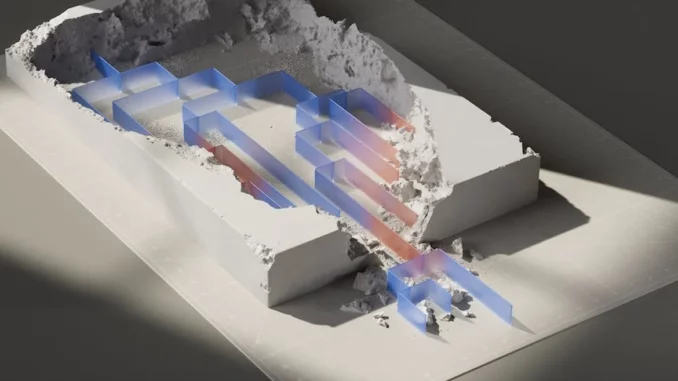
Summary
Sperra Secures Government Funding to Revolutionise Energy Storage with Subsea Technology
In a significant stride towards sustainable energy solutions, Sperra, a trailblazer in marine energy projects, has secured substantial US government funding to advance its pioneering subsea pumped hydro energy storage (PHES) technology. Developed in collaboration with Germany’s Fraunhofer Institute for Energy Economics and Energy System Technology (Fraunhofer IEE), this innovative approach leverages the natural pressures of deep-sea environments to store and release energy. Martin Keller, project manager at Sperra, elucidates how this cutting-edge method addresses the limitations of traditional land-based systems, aiming to prove its commercial feasibility with an upcoming demonstration project off California’s coast.
Main Article
Harnessing the Power of the Deep
On a breezy Los Angeles afternoon, Martin Keller, a project manager at Sperra, described the company’s breakthrough in subsea energy storage technology. At the heart of their innovation is the Stored Energy in the Sea (StEnSea) project, a collaboration with Germany’s Fraunhofer IEE. This technology utilises large, 3D-printed concrete spheres positioned 600 to 800 metres beneath the ocean surface. The spheres act as reservoirs for excess renewable energy, using it to expel water from within. When power is needed, water flows back into the spheres through turbines, generating electricity.
“This method,” Keller stated with palpable enthusiasm, “represents a significant leap forward by circumventing the land and environmental challenges that traditional pumped hydro systems face.”
3D-Printed Revolution
A key differentiator for Sperra is their deployment of 3D-printed concrete, which offers a cost-effective and scalable solution for constructing the massive spheres. Keller noted, “This innovative approach not only reduces material waste but also expedites the construction process.”
Supported by the newly secured funding, Sperra plans to develop, build, and test a 500kW/600kWh demonstration project along Southern California’s coast. This pilot project is pivotal in transitioning from concept to commercialisation. “Our aim is to demonstrate the technology’s real-world application and scalability,” Keller explained.
International Collaboration
Sperra’s project is bolstered by significant collaboration. The company is working alongside three US National Laboratories, capitalising on their expertise to further explore the feasibility of marine PHES technology. Keller emphasised the importance of partnerships, stating, “Solving complex challenges requires pooling resources and knowledge.”
In addition to US support, Germany’s Fraunhofer IEE and Pleuger, a submersible pump manufacturer, have received funding from the German Ministry for Economic Affairs and Climate Action (BMWK). Keller highlighted the project’s international scope: “This is a truly global effort. We’re collectively developing the essential pump and turbine technologies.”
Strategic Impact
The potential impact of Sperra’s technology could be transformative. As the demand for offshore wind power grows in the US, new energy storage solutions like Sperra’s are crucial for grid stability and optimisation. Keller expressed this sentiment: “Our subsea solution could provide the much-needed energy storage capacity to stabilise and optimise the grid.”
Germany’s National Energy Storage Strategy has highlighted the need to overcome barriers to traditional pumped hydro development, such as land limitations. Keller believes the subsea approach could revolutionise the field: “By moving these systems underwater, we can bypass many obstacles hindering land-based projects.”
Detailed Analysis
Market Dynamics and Environmental Considerations
Sperra’s approach addresses two critical challenges in the energy sector: the need for scalable storage solutions and the environmental impact of terrestrial projects. As renewable energy production increases, particularly offshore wind, the ability to store and manage energy efficiently becomes paramount. Subsea systems offer a promising alternative by using the ocean’s natural pressure, reducing the environmental footprint compared to land-based infrastructure.
Economic Implications
The adoption of 3D-printed construction techniques not only enhances scalability but also reduces costs associated with material waste and logistical constraints. This innovation positions Sperra as a leader in the burgeoning field of marine energy storage, potentially setting industry standards and driving further investment in similar technologies.
Further Development
Future Prospects and Industry Implications
As Sperra moves forward with its demonstration project, the energy industry will keenly observe its outcomes. Success could pave the way for widespread adoption of subsea energy storage, influencing policy and investment in renewable energy infrastructure globally.
Continued Coverage
The unfolding developments in subsea PHES technology are expected to garner interest from stakeholders across the energy sector. Stay tuned for further insights and analyses as Sperra progresses with its ambitious venture, potentially heralding a new era of sustainable energy solutions.

